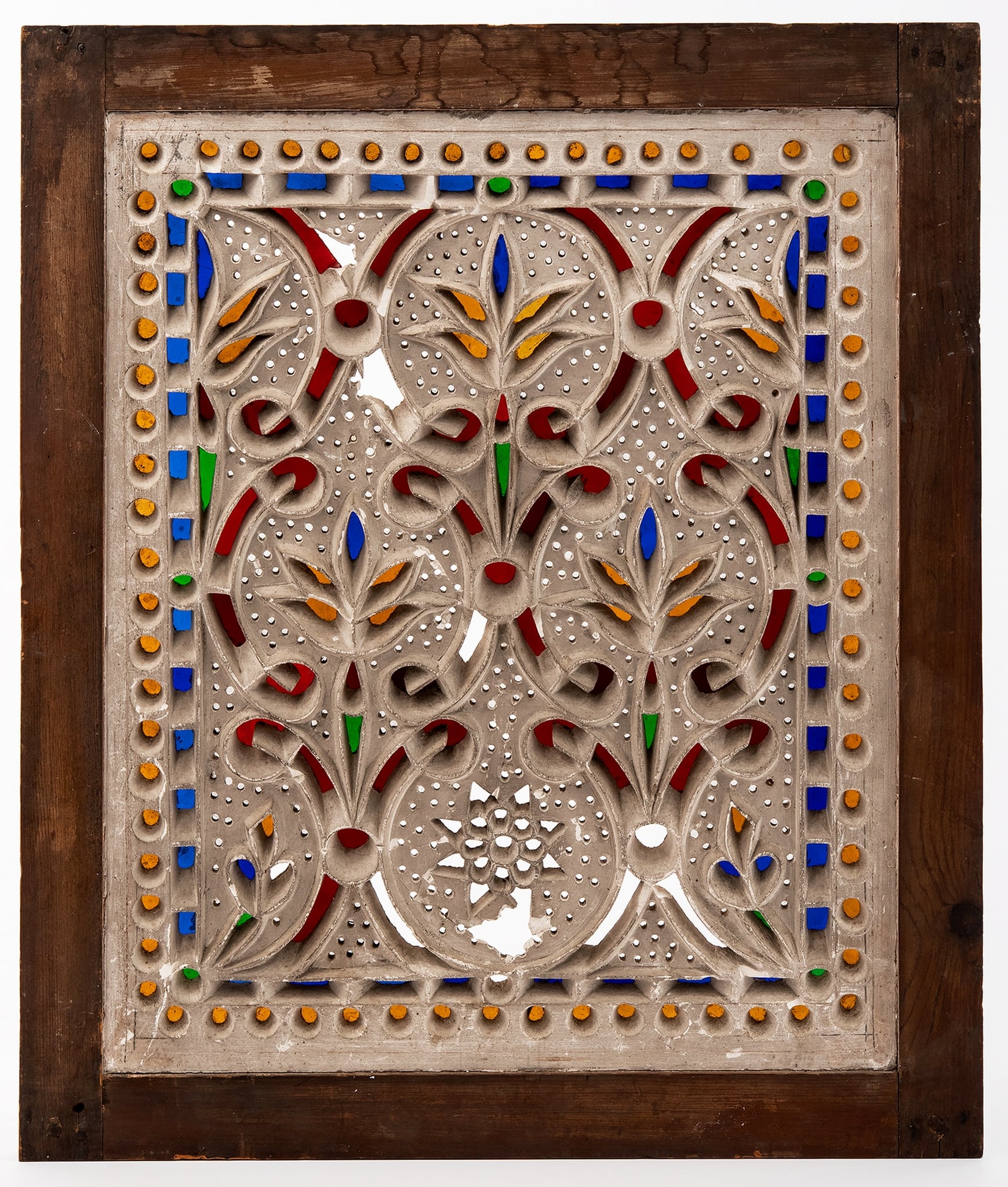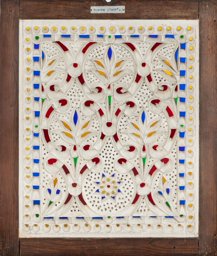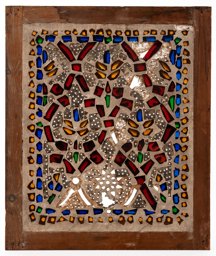Matériaux
Gypsum plaster; colourless glass with greenish and greyish tint; coloured glass (green, blue, yellow); red flashed glass, wood.
Technique
Latticework carved into a rectangular stucco panel with a thickness of 12–14mm and inlaid with colourless and coloured pieces of glass. The pieces of glass are attached to the back of the panel by a thin layer of gypsum plaster with a thickness of 0.5–1.5mm.
The pieces of glass were cut to size – more or less following the form of the openings. Scratch marks along the edges of some glass pieces testify to the use of a glass cutter. Coloured glass was used for the floral motif, while the perforated areas are covered with large pieces of clear glass. The latter show a greyish tint and are slightly thinner (c.1mm) than the coloured pieces of glass (c.2mm). The colours include emerald green, cobalt blue, dark yellow (amber), and ruby red. The red glass is flashed, that is, a double-layered sheet glass consisting of colourless glass covered with a thin layer of red glass. All pieces have shiny surfaces and do not show inclusions (air bubbles).
The design of the latticework is laid out on two levels: The main motif (level 0) was cut out of the stucco panel with sharp tools following the lines of a preliminary drawing painted in red chalk (sanguine) on the front of the panel. Traces of this preliminary drawing can still be seen in some places. The second level (level –1), which lies 4–6mm below level 0, shows irregularly spaced, conical perforations, which are slightly tapered towards the back. The holes were probably made by piercing metal or wooden pins from the front of the panel into the not yet fully hardened plaster. In the centre, they have diameters of 3–4mm and 9–12mm in the border. The distances between the holes rangemm between 3 and 8mm. The main design and the perforations have been worked in such a way that the incident light is directed downwards into the room.
The stucco panel was produced by pouring the plaster directly into a wooden frame. Its colour is off-white. The back of the panel (corresponding to the upper side in the moulding process) is slightly uneven. To improve adhesion of the thin plaster layer used to fix the pieces of glass, the lback of the plaster panel was roughened using a serrated tool. Traces of a shiny, brown glue-like substance around the edges of the openings suggest that an adhesive (probably animal or vegetable glue) was used to fix the pieces of glass to the panel and prevent them from being displaced while pouring the embedding stucco layer.
The frame consists of four strips of softwood joined together by tenon dowel joints and fixed at each corner by two iron nails. It was painted brown after the moulding of the panel.
Etat de conservation et restaurations
The window is preserved in its original frame, but in relatively poor condition. The latticework shows many cracks and several losses (lacunae and superficial losses) in the central motif, as well as on the rear of the top left corner. Around 20% of the glass is missing. The pieces have become detached from the stucco panel along with the thin plaster layer in which they were embedded. The surfaces of the latticework are dusty but do not show any clear signs of weathering.
The stucco and glass window has not been restored so far.



